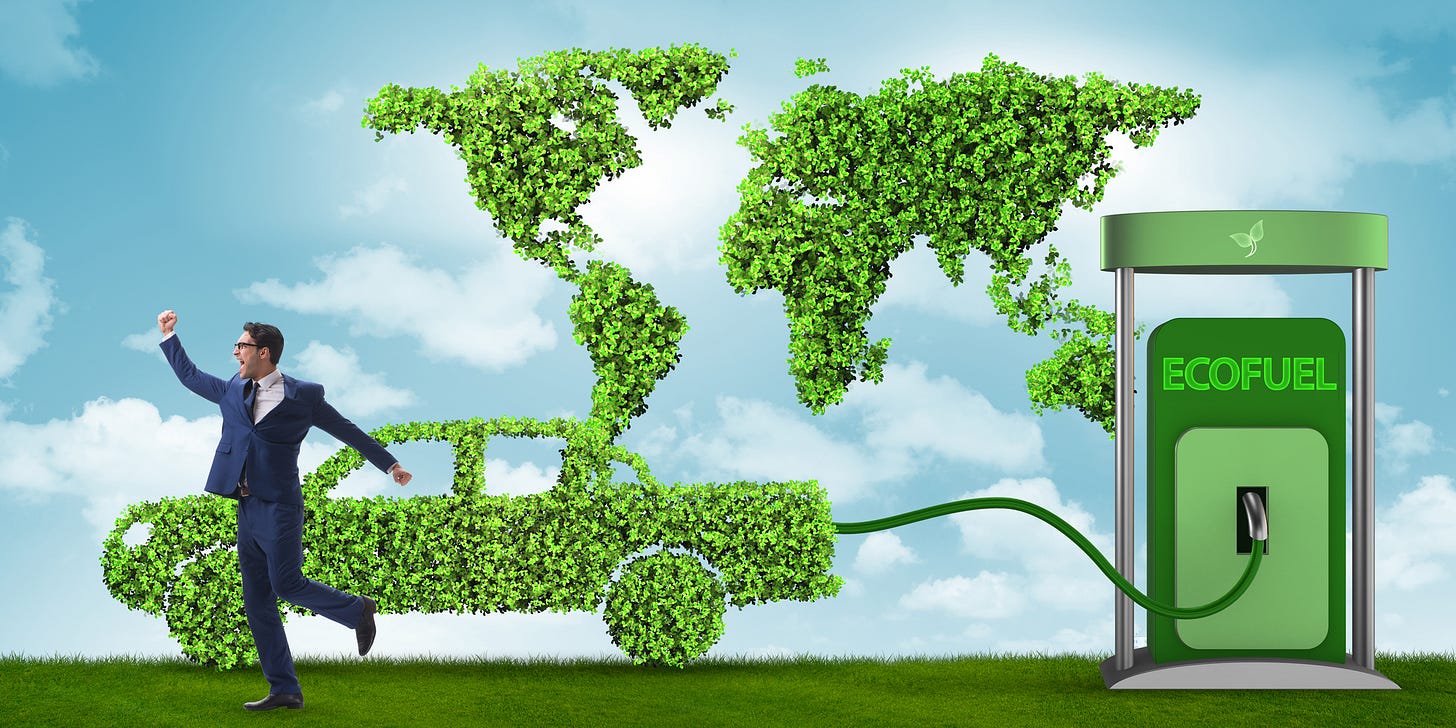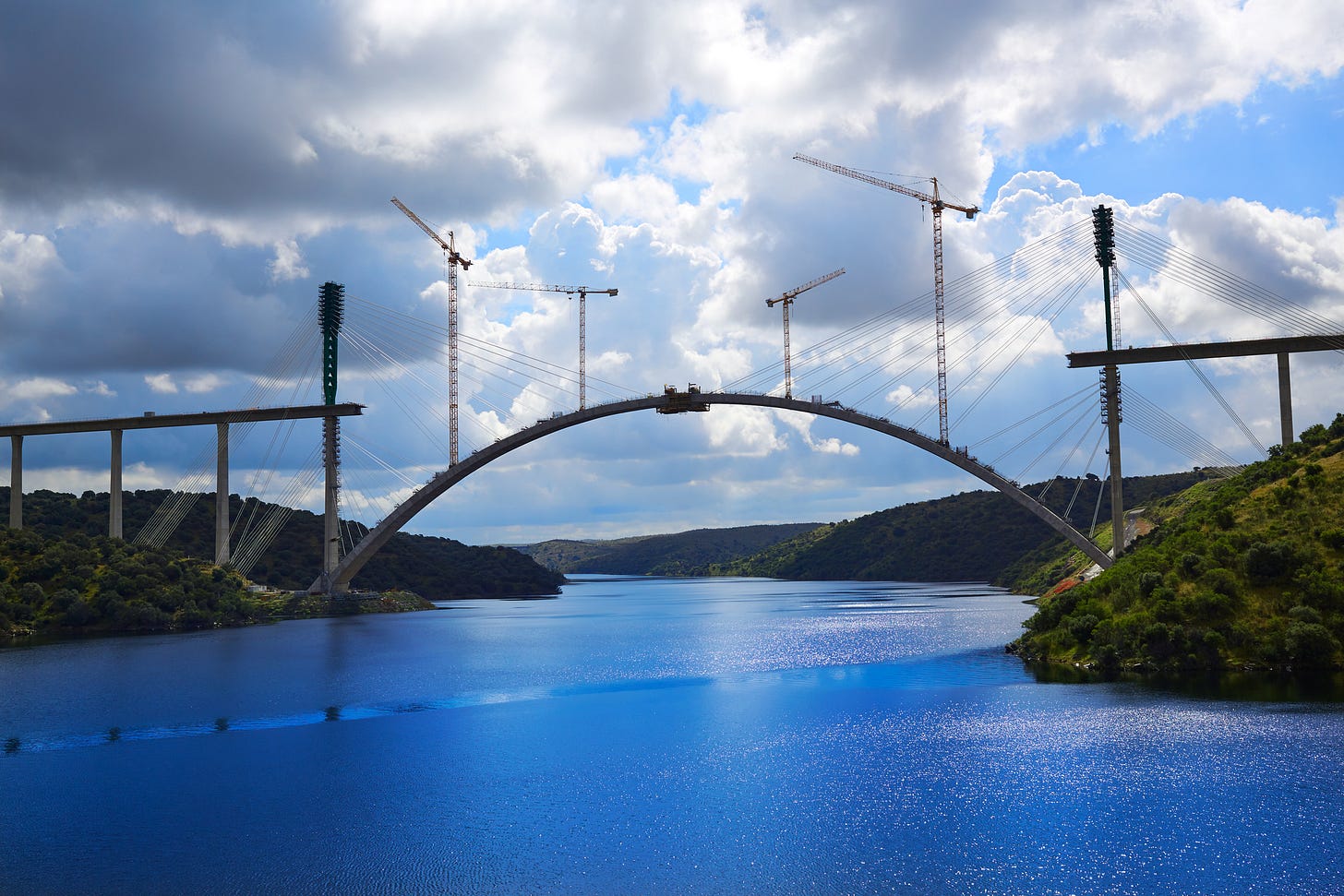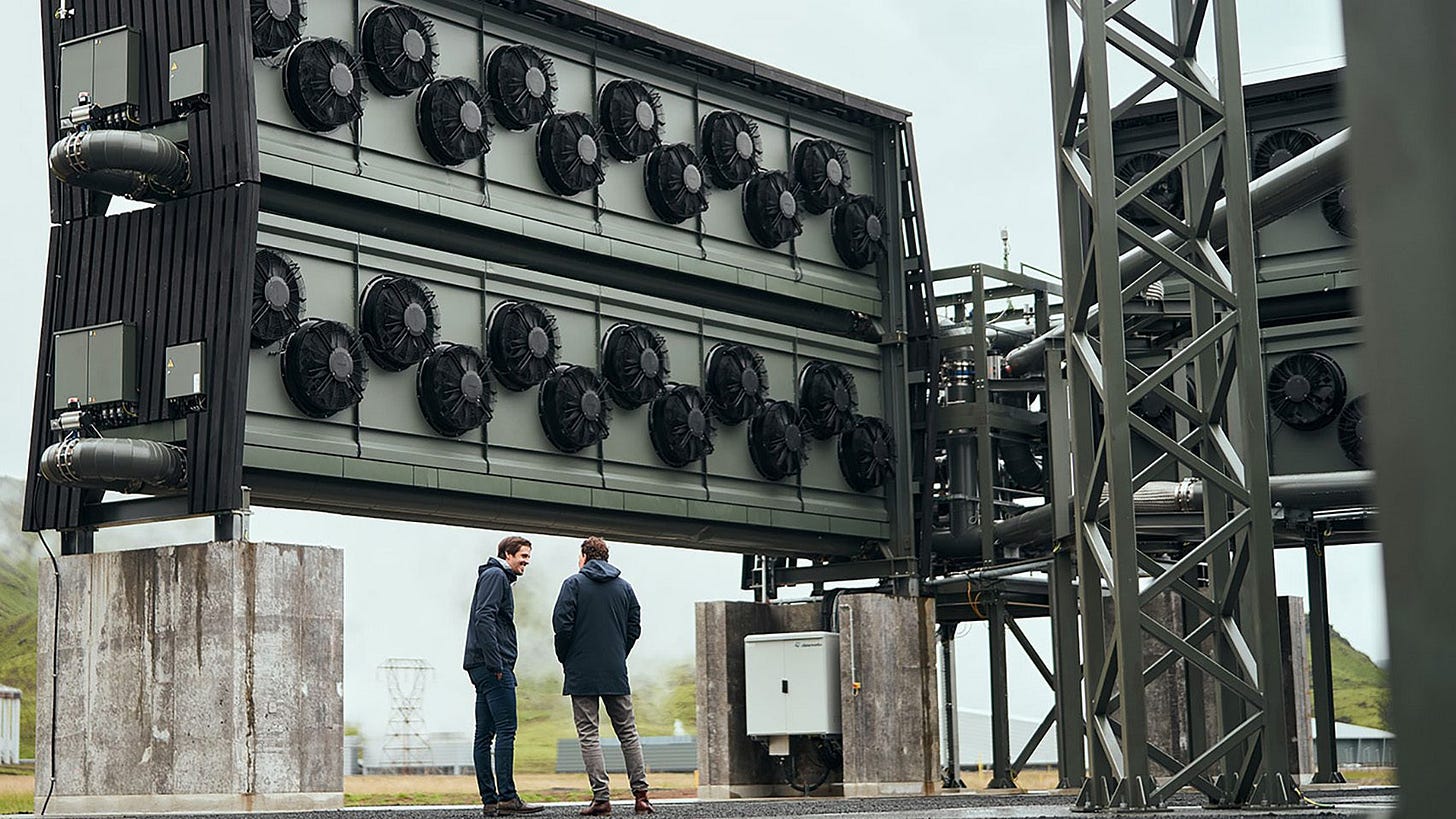Last week, I explained how fossil fuel statistics can paint an overly pessimistic view of the transition to a clean economy. This week, I’m going to talk about the opposite problem: exponential growth of clean technologies can paint an overly optimistic view. Matt Eggers puts it concisely1:
When someone says “we have all we need to solve climate we just need to deploy” that makes me pretty suspect that they don't understand the problem. Usually they are talking about solar/wind and EVs which are indeed hugely important. But that covers a fraction of overall emissions. What about the rest?
We’ve made great progress, but the most of the work still lies ahead of us.
What Got Us Here Won’t Get Us There
When a product achieves exponential growth, it has a good chance of taking over its market segment2. But it’s important to be clear on what that market segment is.
For instance, sales of electric cars are skyrocketing – but many commuters won’t ever be able to use them. Much of the world gets around on two-wheeled vehicles, in regions where it will be difficult to deploy charging infrastructure and the upfront cost of a battery-powered vehicle is out of reach. A recent episode of the always-excellent Volts podcast covers Gogoro, a company which is addressing this need using electric scooters. To lower the upfront cost, they sell the scooter without a battery, and then rent out the batteries. Customers swap batteries at ATM-style recharge stations, paying for both battery and recharges on a monthly basis. This is a very different approach than, say, Tesla, and covers a large market segment that Tesla doesn’t address.
In general, a product that is doing well in one country, for one kind of buyer, may need to be adapted to succeed for other buyers or in other countries – or it may not be able to address those markets at all. The Peloton bike was a smash success, until it saturated the market of folks able to afford a four-digit price tag and a monthly service fee equivalent to three streaming services. Non-polluting vehicles, power sources, industrial processes, and agricultural techniques will face limits of their own. This creates the need – and opportunity – for additional solutions.
The Off-the-Shelf Trap
Even within a single market segment, a product may face challenges to growth. To grow exponentially, all of the resources involved in producing, distributing, and utilizing that product must scale as well. Materials, components, suitable land, specialized equipment, skilled staff.
Sometimes, a company pioneering a new technology will have to produce components themselves. For instance, Tesla manufactures their own electric motors. This requires time and money, but at least the company is in a position to scale up component supply as needed.
Other resources can be obtained “off the shelf” – i.e. from existing suppliers or sources. So long as those existing supplies are adequate, this approach allows for rapid growth while minimizing upfront investment.
The problem occurs when a resource is available off the shelf, but not in sufficient quantity to support a full disruption of the market. For many years, battery manufacturers didn’t have to worry about obtaining lithium; it was a commercially available commodity. However, as demand for batteries increases exponentially, we are crashing through the ceiling of existing supply, and now lithium production threatens to become a bottleneck.
Anything that is needed to support a zero-carbon technology or product, but can be obtained “off the shelf”, can represent a hidden bottleneck. The problem might be a material (nickel), component (bioreactors for lab-grown meat), staff (England is faced with a shortage of plumbers trained to install heat pumps), or even special equipment for transporting giant wind turbine blades from the factory to the installation site. The potential for a trap arises when supply is not a concern at small scale. This allows a new technology or product to develop without considering how we will get enough supply to serve the entire world.
In theory, we ought to be able to see these problems coming, and develop new mines, build new factories, or train new staff. In practice, we don’t have the best track record of spotting this stuff in advance.
Landlocked

Land represents a potential scaling trap for many climate solutions. It’s easy to find a good site for the first wind turbine, harder for the 500,000th3. Solar farms use substantial land. Land-based approaches to fuel generation or carbon removal use far more. Hydropower, geothermal, and other energy sources all have specific requirements that limit the number of suitable locations. Finally, different applications will compete for the same space. Availability of suitable land will put a ceiling on how far various solutions can scale.
The Continuing Bovine Menace

So far, we’ve talked about limits that could prevent a green solution from taking over its entire sector of the economy. But the biggest problem lies in sectors that aren’t yet addressed at all. The list of climate-polluting activities is long, and successful products have emerged in only a fraction of them.
Vehicles come in all shapes, sizes, and usage patterns, from bicycles to giant mining excavators. Every sort of industrial process, agricultural activity, and fuel-burning appliance must be addressed. We still need to demonstrate commercial solutions for seasonal energy storage, steel production, clean firm energy sources, cement manufacturing… and, yes, enteric methane (cow burps).
Finally, even in sectors where promising solutions have already emerged, there’s always room for more. Overlapping solutions give us a better chance of filling in the nooks and crannies of the market. When we’re talking about transforming the entire global economy, those nooks and crannies can be pretty large.
So How Can We Track Progress?
I’ve claimed that we can’t track progress toward a clean economy by looking for a decline in fossil fuels, nor by simply extrapolating the overall growth of renewable energy production. So how can we track progress? How can we identify unaddressed sectors, spot impending barriers to growth, and generally find the gaps in our progress toward net zero?
It seems to me that we need to sweat the details; all of the details. We need to enumerate every sector, sub-sector, and sub-sub-sector of emissions – not “transportation”, but “two-wheeled commuter vehicles”. For each subsector, we need to examine every country and market segment. For every one of these, we need to ask: is a zero-carbon solution available? Is it competitive? Are the resources available for it to scale?
This will be a ton of work, but it’s the only way to tell how much progress we’re really making. More important, it’s the best way to identify opportunities to help that progress along. We’re going to need more basic research in some areas, and a lot more Gogoros in others. We’ll get them faster if we identify them sooner.
This will require a major, organized effort. Bits and pieces already exist, and honestly I have not had time to explore the resources that are currently available. Nor am I sure how we can best carry forward the work. But I hope to make a contribution.
This is an excerpt from a longer Twitter thread, worth reading.
Barring new competition; but so long as the new competitor is also a green solution, that’s fine for our purposes.
Half a million wind turbines is a plausible order of magnitude! One scenario calls for 5.9TW of wind generation by 2050, and a very large turbine might generate 10MW. Another source projects 40,000 in the US alone.




